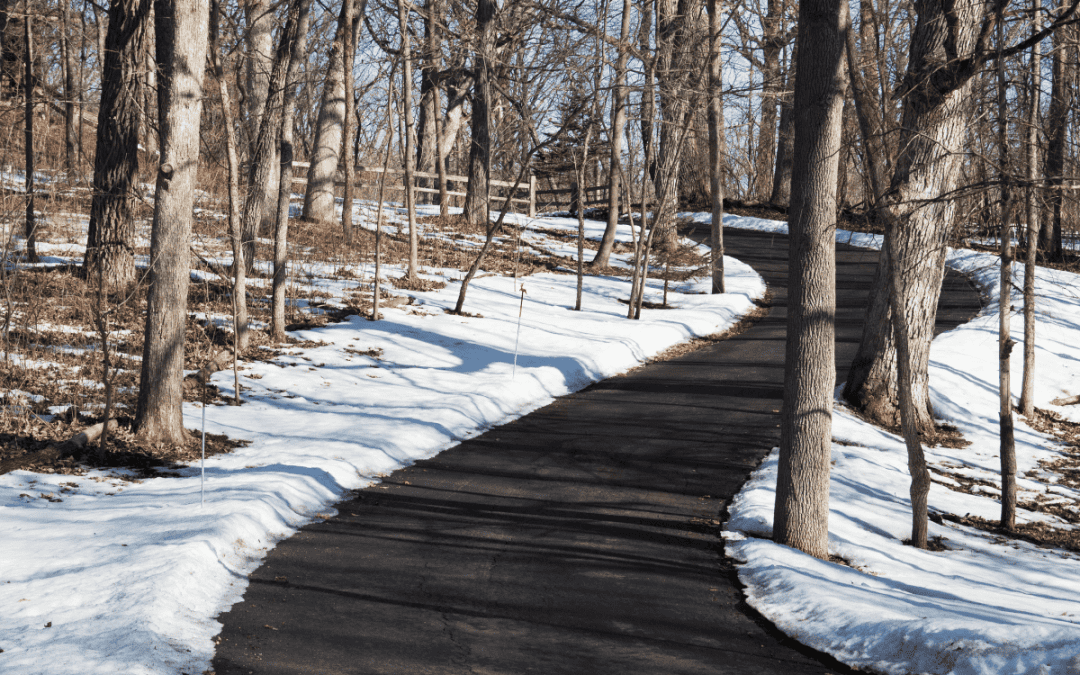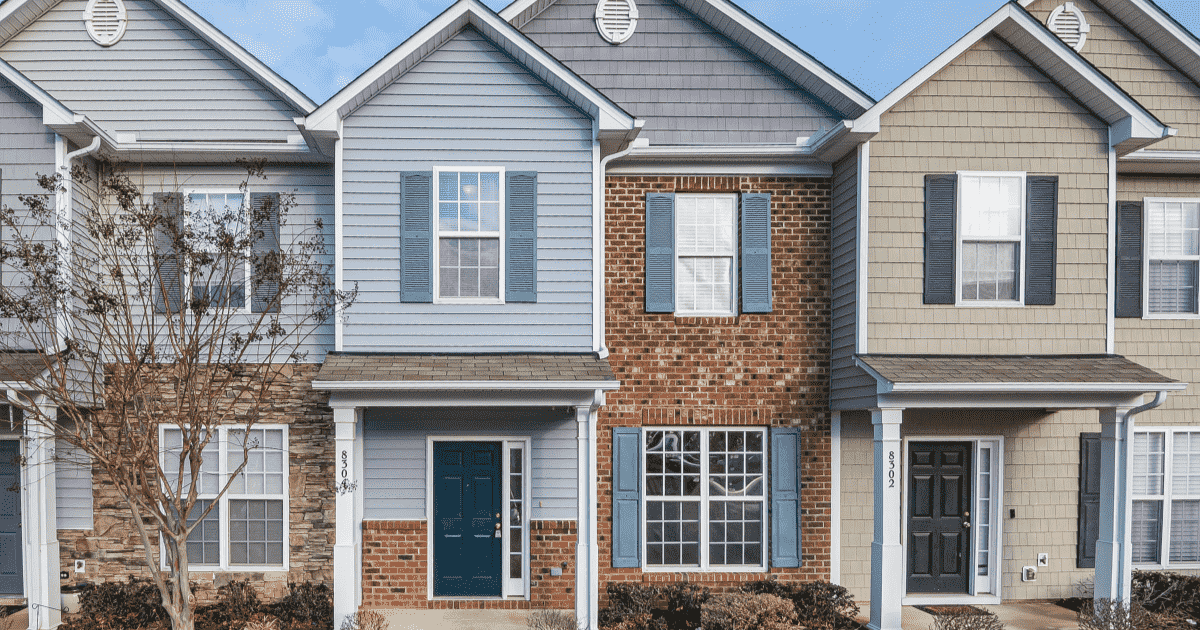An easement may become abandoned as a legal right as a result of a prolonged lack of use. However, there is a high threshold to establish that a registered easement has lost its legal status.
In Fromstein v. Michele-King, the Ontario Superior Court of Justice addressed a dispute between two neighbours in Toronto over the use of a mutual driveway running between their two houses.
The mutual driveway was created by reciprocal easements registered on title to each of the properties and was described as a right-of-way without any restrictions or uses specified.
The driveway in question
The driveway was wide enough for a car to pass between the two houses and had been historically used by successive owners to access parking garages in the rear of their properties. By 2022, the garages were long gone, but the remnants and parking pads remained.
From about 1975 until about 2016, one of the prior owners of the applicants’ property used the driveway to access and park a car in the back of the property.
Dispute between neighbours
In 2018, the respondent erected a wooden fence along the property line at the rear of the two properties. The fence obstructed the applicants’ easement, rendering it impossible for them to access the back of their property with a vehicle.
Further, the respondent consistently parked a car at the front of the mutual driveway, blocking access to the driveway except by pedestrians who managed to squeeze by and kept garbage and recycling bins in the mutual driveway.
In 2020, the applicants purchased their property with the understanding that the registered mutual driveway was indeed mutual. They asked the respondent numerous times to remove the portion of the fence encroaching on the easement, remove the bins and cease parking their vehicle on the easement.
Legal battle
Litigation ensued when the respondent did not agree to these requests. The applicants argued that the respondent had interfered with their reasonable use of the easement.
The respondent’s position was that the applicants’ right-of-way had been abandoned. The respondent sought to amend the registered easement restricting access to the portion of the driveway between the two houses to pedestrian access only.
The respondent argued that since the use of the driveway for cars to pass between the two houses had effectively been abandoned by the parties (or by their predecessors in title), it was no longer an operative part of the easement, and the written easements should be modified to reflect this change in practice.
The respondent relied on Bialkowski v. Cowling, where the court determined that abandonment can be implied in certain circumstances by the conduct of the parties.
In that case, a right-of-way was made inaccessible to the parties by a chain link fence that had blocked all vehicles from accessing it. The court decided that after ten years, the right-of-way had been abandoned since there was no other way to understand what the parties intended by having fenced it off with a physical barrier.
In the case at hand, conversely, the evidence was that even after the garages were torn down, the applicants’ predecessors in title continued to use the driveway and park cars in the back of the house. The use was sporadic, mostly when they had guests. Still, it was nevertheless a continuing use over the years, rebutting any inference that the parties had abandoned the easement (as occurred in Bialkowski).
In addition to the abandonment argument, the respondent claimed that she had obtained a prescriptive easement over the driveway as a result of parking a car.
Essentially, the respondent argued that she had acquired the right to park a car on the driveway against the applicants’ will.
The judge’s ruling
The application judge rejected this argument on the basis that it was on a strictly permissive, cooperative basis. In particular, the evidence was that the person who parked their car on the driveway would give their neighbour the car keys. In that way, a workable regime was established so that no one would block the other’s access to the driveway.
In the application judge’s view, such an arrangement was a “laudable agreement” and was to be commended as good neighbourliness rather than the legal basis upon which an enforceable prescriptive easement became binding upon future owners of the properties.
The court also rejected the argument that parking on the driveway was an ancillary right since that was contradictory to the meaning and intent of the easements.
In the application judge’s words: “A mutual right-of-way is, to put it simply, mutual. If one party blocks the driveway from the other’s use, they are not establishing an ancillary right; they are breaching the other party’s rights.”
Conclusion
In the result, the court ordered the respondent to remove the fence and other obstructions blocking the applicants’ use of the mutual driveway.
In addition, the respondent was ordered to cease parking on the driveway unless she reached a new agreement with the applicants allowing her to do so. One expects that the applicants’ willingness to enter into such an agreement will have considerably diminished due to the litigation.
The case shows that registered easement rights cannot be lightly trampled with and will generally not be lost unless there is evidence of a prolonged intention to abandon them.
James Cook is a partner at Gardiner Roberts in Toronto and has been with the firm since he articled there in 2002. As a litigator in the firm’s Dispute Resolution Group, he has experience in a broad range of commercial, real estate and professional liability litigation. Phone 416-865-6628; email jcook@grllp.com. This article is provided for educational purposes only and does not necessarily reflect the views of Gardiner Roberts LLP.

















I congratulate the judge for pointing that a reciprocal right of way is much different that the one cited as precedent by the legal representative of the ‘badly mannered and poorly informed’ neighbour.
To mix a metaphor – a mutual driveway is a two-way street.
This is a story of a shared/ mutual driveway between two houses in Toronto/ York area. We have always had a friendly communication between the previous owners and neighbours on our mutual driveway. There were times I had to knock on the neighbour’s door in the wee hours and ask them to move their vehicle so I could take a child somewhere. And at times we left each other’s keys for each other to move vehicle if needed. It was a times a hassle and a bother, but it was all part of being neighbours – and sharing.
The house beside us was sold and a new home was planned. Unfortunately, the new owners/ builders of the house and the designer of the house did not do their home work regarding the mutual driveway. This was apparent when the neighbour’s plans were first seen. The new owners wanted to create their Front/ Main Entrance on the side of the new build opening up onto the mutual driveway. This was a very odd design. The wrong design for this particular lot with a mutual driveway. I was surprised City of Toronto Planning Department had let this go through. The 9’ wide driveway provided no room for any pedestrian traffic with a vehicle travelling on the driveway to the rear parking space. A vehicle would be driving down the driveway and a possible collision could be had with their open Front Entrance Door. Safety was a huge issue because neither neighbour would know what the other neighbour would be doing. Add to that poor visibility with exactly 50% of the time the vehicle would be backing up over the neighbour’s welcome mat.
City of Toronto Planning Department calls this a civil matter. They wash their hands of the Mutual Drive
I personally surveyed every house in the neighbourhood area. There were no precedents for Front/ Main Entrances opening up onto mutual driveways. There were a few Front/ Main Entrances onto personal driveways.
The owners refused to change their plans. We took our objection to C of A on the basis it would be a liability and safety issue for the current and future owners of both houses. Thankfully and with wisdom, the C of A unanimously voted to turn down the building application. The neighbours took their objection to the ruling to (at the time) TLAB. They changed their application and acquiesced to the C of A decision.
The new owners still thought they could park on the mutual driveway. It took a few discussions to iron out the Care and Use of a Mutual Driveway with our neighbour. Offering to exchange car keys and cell phone numbers was not taken up.
In our experience this back and for objections have set possibly good neighbours at odds with each other. I have sent a request to City of Toronto Planning Department via my Councillor’s Office – to please notify the planners to try and educate new builders and designers as to the strange beast of the Mutual Driveway. It would save a lot of time, money and frustration on the new builders – and set them out on a good foot with their neighbours.